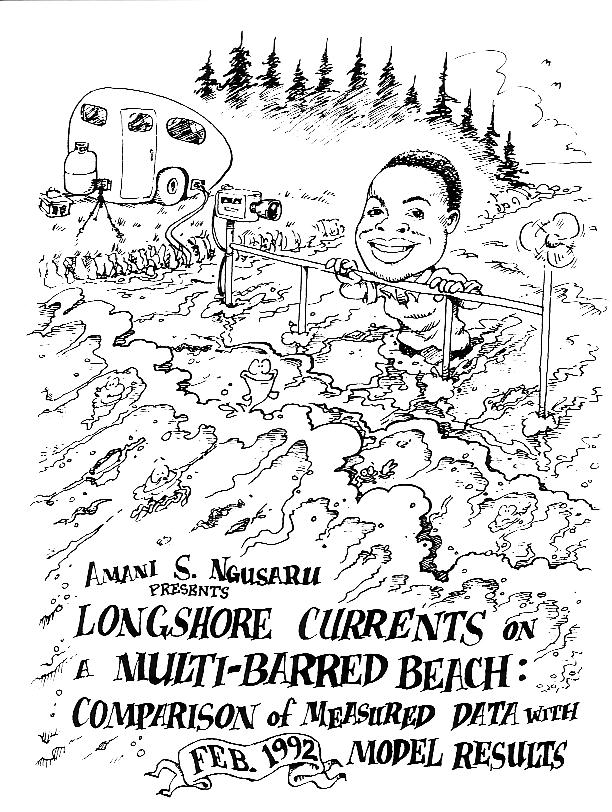Amani Ngusaru

Longshore Currents on a Multi-Barred Beach:
Comparison of Measured Data with Model Results
Thesis Approved February 1992
Longshore currents were measured on a multiple
barred beach at Stanhope Lane on the North coast of
Prince Edward Island, Canada, in October and
November of 1989. The observed currents, typically
represented by a half-hour average, were compared
to theoretical estimates based on the dissipation
models of Thornton and Guza (1968) [TG(86)] and
Thornton and Whitford (1990) [TW(90)]. The
model by TG(86) included bottom friction, wave-
induced radiation stress and turbulent induced
radiation stress (Reynolds stress) terms in the
alongshore momentum balance. The model by
TW(90) added new terms in TG(86) model, these
included surface wind stress, beach slope dependent
breaker index, turbulent momentum exchange,
together with a more complex representation of wave
energy dissipation based on the observed distribution
of breaking waves. The present work uses a model
obtained by excluding surface wind stress from
TW(90). The primary results were that the
longshore currents were reasonably modeled when
including turbulent momentum exchange and non-
linear bottom friction without surface wind stress.
Both observations and theory suggest that the
currents are strongly tied to individual bar crests.
However, the observations show flow patterns which
are consistently displaced landward relative to the
theoretical estimates.
Various recent suggestions as to the variability
of the currents on time scales of a few minutes were
also examined. An interesting result was the lack of
coherence between flows over the various bars, and
with local estimates of the variability of the radiation
stress component, , over the same time scales.
This was interesting, since the mean longshore
currents are clearly forced by radiation stress.
Amani Ngusaru went on to earn his Ph.D. at Memorial University, and
he is now the Eastern African Marine Ecoregion Leader for the
WWF Tanzania Programme Office.